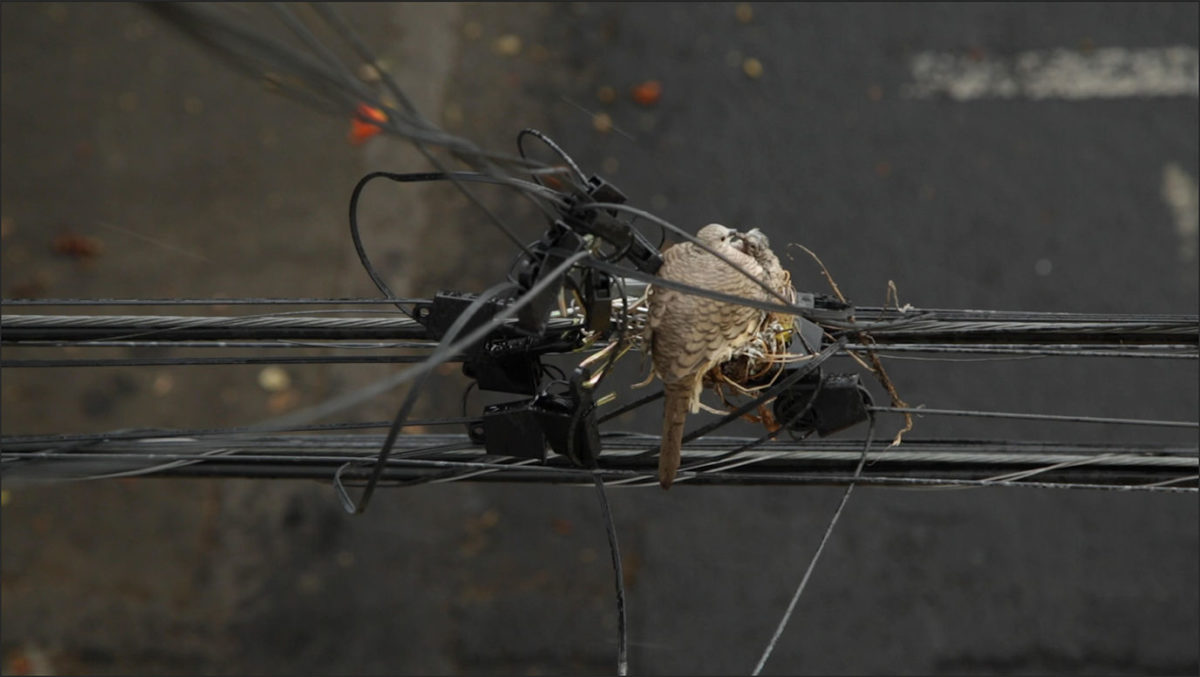Time seems to slow down once soundscapes burst into the forefront. The nondescript blur of the surroundings finally takes shape, configured in real time by the subtle layers of contrasting frequencies. Muffled voices reiterate an apparently endless loop. A subtle drone crescendos from the background and sets the tone for a hypnotizing local ambiance. Erratic flickers of sound reinforce the feeling of a breathing environment. Once these enthralling textures are assimilated, it becomes apparent that the picture in front of us is barely recognizable. The echoes heard are merely remnants of an ever changing landscape.
Naturally, the aforementioned scenes don’t assume just a casual realization, they’re built on foundations of intimacy and understanding, of affection and belonging. They’re about seeing oneself as an intrinsic part of a wider ecosystem in which our perspective is just one of many.
Two Latin American films part of the Tiger Competition at the 51st International Film Festival Rotterdam share a common thread in their embodiment of the sensory as a means for tangible memory. And in both cases, this approach constitutes a type of elegy for a place.
In EAMI, the latest from renowned Paraguayan director Paz Encina, the focus isn’t so much the distinctive elements that give life to a specific location, as the film’s sense of place comes from the cosmovision of a particular group of people: the Ayoreo Totobiegosode, an indigenous community that has inhabited the Chaco region between Paraguay and Bolivia for generations.
As with her work in her previous feature length films Hamaca paraguaya (2006) and Ejercicios de memoria (2016), Encina creates a palpable atmosphere of grief by interweaving autochthonous aural details and visual iconography from Paraguayan history. Just like the stoic aged couple in the former and the bleak oral retellings of the later, the Ayoreo people that are EAMI’s protagonists seem to exist in temporal stasis, between the vivid recollections of a world that resists to fade away and a current environment violently marching forward—in this case in the form of the religious colonists stripping them of what they call home.
Land is portrayed as felt by the Ayoreo: like a mythological entity painfully wailing until it goes out of breath. Its visual depiction always focuses on the vestiges of what’s no longer there, what’s ravaged and now desolate. Its sonic rendering establishes that last connection to the vastness of the elemental powers, mournfully signaling a time that no longer can be. Visual metaphors and the narrative treatment through voice-over can feel redundant at times, but nothing can take away from an urgency that bleeds from every frame.

Although less politically inclined and noticeably more minimalist and lo-fi in its aesthetic approach, the core of Eugenio and Mara Polgovsky’s Malintzin 17 is not that distant from Encina’s film: safekeeping the memory of something in motion. As the name might suggest to those well versed in Mexico City’s middle-class neighborhoods, Malintzin 17 is set on the homonymous street in the Coyoacán borough, specifically on what can be seen from the late Eugenio Polgovsky’s apartment window.
Early on its hour-long runtime, an unsuspecting pigeon decides to nest on the power line nearest to Polgovsky’s balcony, cementing the film’s playful conceptual anchor: replicating the pigeon’s point of view. Nevertheless, Malintzin 17 is not merely an aseptic formal exercise; what ends up bringing life to Polgovsky’s conceit, are the recurring conversations with his daughter, Mile. Together, they create imagined narratives for their surroundings, and as the film progresses, the lyrical nature of this urban environment comes to life via an expressive use of erratic camera work, and the purposeful emphasis on quotidian soundscapes.
Even without the metatextual layer of knowing about Polgovsky’s death, and how it might permeate these collected vignettes with an aura of melancholy, Malintzin 17 excels as a tender and imaginative capsule about aural memory, and the emergent storytelling present in it, once someone decides to start listening.